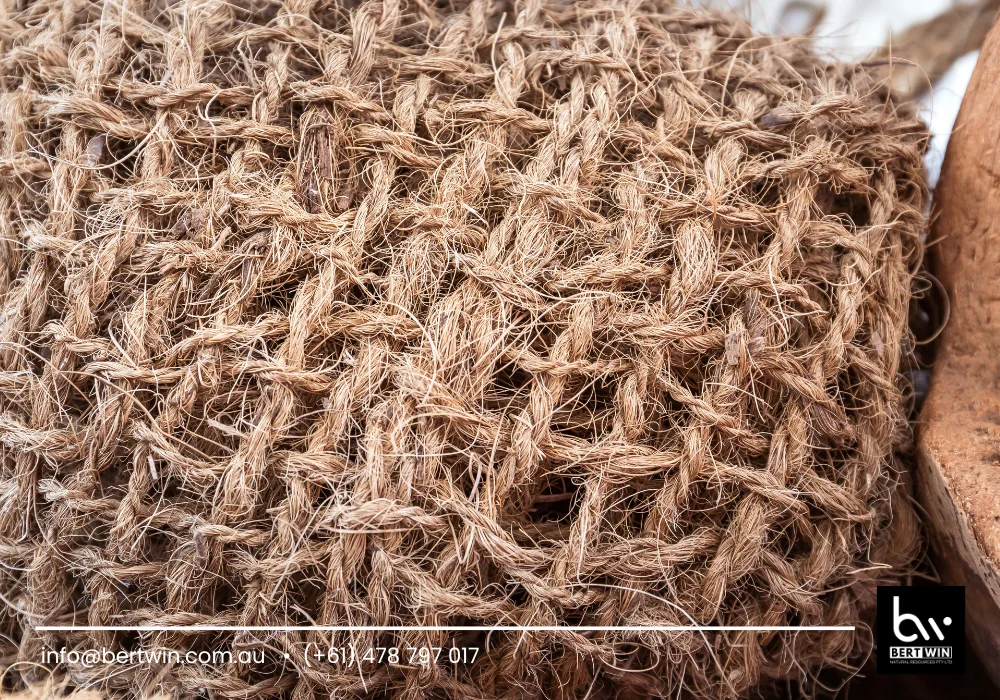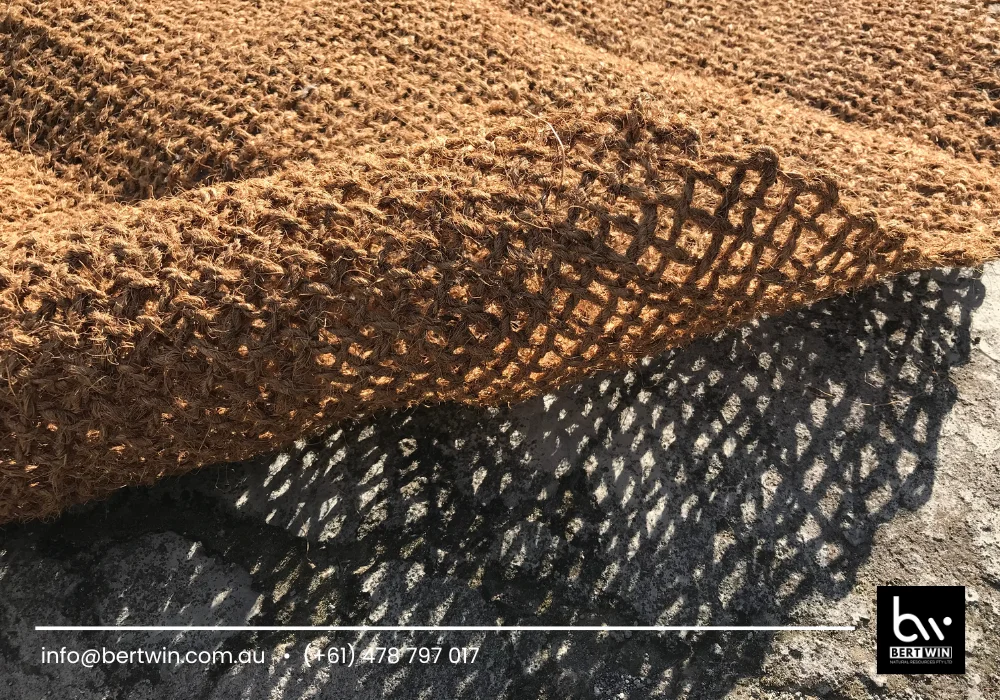Coco mesh for road construction is becoming an increasingly popular choice in modern infrastructure projects that aim to balance durability with environmental responsibility. Made from coconut coir—a natural fiber extracted from the husk of coconuts—coco mesh offers a biodegradable, effective, and sustainable method for reinforcing soil, preventing erosion, and stabilizing embankments in roadworks.

What Is Coco Mesh and How Is It Used in Road Construction?
Coco mesh, also known as coir netting or coir matting, is a woven mesh structure made from thick coconut fibers. These fibers are twisted into yarns and woven into nets of varying densities and thicknesses. For road construction, coco mesh for road construction is primarily used to stabilize slopes, support new embankments, and protect exposed soil surfaces from erosion caused by rainfall or wind.
It acts as a temporary protective layer while vegetation establishes itself. Once plants grow through the mesh and take root, they provide long-term stability, while the coir slowly decomposes, enriching the soil.
Key Benefits of Coco Mesh in Road Construction
1. Erosion Control
One of the main benefits of using coco mesh for road construction is its excellent erosion control capability. When applied on slopes, embankments, or roadside ditches, the mesh anchors the topsoil in place, preventing landslides and sediment run-off, especially during the early stages of construction before vegetation takes hold.
2. Biodegradability and Environmental Safety
Coco mesh is 100% biodegradable and decomposes naturally over a period of 2–4 years, depending on climate and soil conditions. This feature makes it an ideal solution for eco-sensitive areas where permanent synthetic materials could disrupt the local ecosystem.
3. Soil Reinforcement and Vegetation Support
The open-weave structure of coco mesh allows seeds to sprout and roots to penetrate easily. It not only supports plant growth but also retains moisture, which enhances vegetation in dry or erosion-prone zones. This makes coco mesh for road construction a dual-purpose tool—serving both structural and ecological functions.
4. Simple Installation
Coco mesh is lightweight, flexible, and easy to install. It can be rolled out over large areas and fixed with biodegradable stakes or wooden pegs. This ease of application reduces labor costs and time spent on ground preparation.
5. Cost-Effective and Locally Sourced
In many countries where coconuts are abundantly grown, coir-based products are a readily available resource. Using coco mesh for road construction helps promote local industries, create rural employment, and reduce dependence on imported synthetic alternatives.
Applications of Coco Mesh in Road Projects
The use of coco mesh is suitable for a variety of road construction contexts, including:
- Slope stabilization for highway embankments
- Drainage channel protection to prevent bank erosion
- Roadside revegetation in cut-and-fill areas
- Temporary ground cover during grading and soil movement
- Environmental restoration in eco-sensitive zones impacted by road expansion
By supporting native vegetation growth, coco mesh contributes to the long-term health of landscapes disturbed by construction activities.
Installation Guidelines

Installing coco mesh for road construction involves a few straightforward steps:
- Surface Preparation
Clear the area of rocks and debris, and level the surface if needed. If vegetation is to be introduced, spread seed evenly before placing the mesh. - Rolling Out the Mesh
Unroll the coco mesh along the slope or surface, ensuring full coverage with minimal gaps. - Fixing in Place
Secure the mesh with wooden stakes, metal pins, or biodegradable anchors at regular intervals (usually every 30–50 cm). Overlap adjacent rolls by 10–15 cm for continuous coverage. - Watering and Maintenance
Water the area regularly to aid seed germination and root growth. Monitor the mesh over time, especially after heavy rainfall.
Sustainability and Long-Term Impact
Using coco mesh for road construction supports sustainable infrastructure development. Its low environmental footprint, coupled with its natural decomposition process, makes it a preferred material for governments and contractors adhering to green building standards and environmental protection policies.
In areas affected by deforestation or overdevelopment, coir mesh plays a role in restoring ecological balance by promoting native plant regeneration and reducing sediment loss.
Conclusion
As infrastructure projects increasingly prioritize environmental considerations, coco mesh for road construction offers a practical and sustainable solution. Its benefits in erosion control, soil stabilization, and revegetation make it a valuable material for any construction team focused on long-term success and environmental responsibility.
For further information, you may contact WhatsApp at (+61) 478797017 or via email at info@bertwin.com.au. We are ready to assist with product specifications, order inquiries, or project consultations tailored to your road construction needs.
Ask ChatGPT
